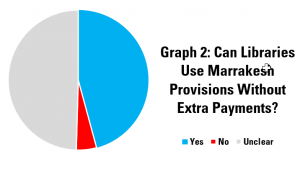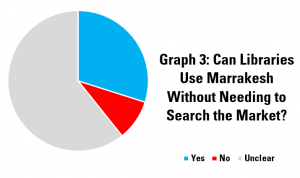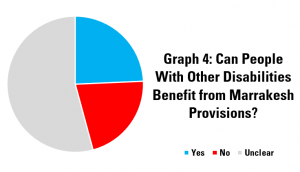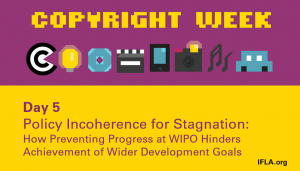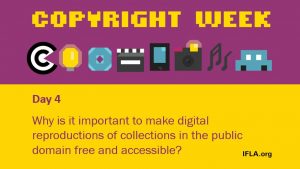Understandably, the state of copyright law was not at the front of everyone’s minds in the library field in 2020. Much more immediate concerns – how to continue to fulfil missions with the doors closed, how to provide services in a way that doesn’t put staff or users at risk – were top of mind.
Nonetheless, they were felt, in the rules around online storytimes, remote access to materials, and the terms and conditions under which libraries could access digital content.
The pandemic, in effect, shone a light onto the possibilities and limitations of copyright laws, and their impact on libraries and their users, which has the potential to shape debates for years to come.
Crucially, it underlined that, as opposed to the situation around physical works for which there are pre-existing infrastructures and practices, copyright in the digital world is more of a wild west.
In other words, the way in which copyright applies it the digital space – and in particular which laws and principles should apply – remains contested, and even unclear. In effect, the law has yet to move in, leaving those with the greatest strength in charge.
To go into more depth – and in line with the idea of digital copyright as a wild west – this blog looks at different aspects of the situation through the medium of Westerns.
The Searchers
… or at least more correctly, the researchers – alongside other groups who rely on libraries – students, teachers, readers in general. Because throughout, it’s important to remember who are the ones affected here.
It is these groups who suffer when it is not possible to access, or make use of works in a library collection because of restrictions, or a lack of clarity over what is permissible.
Activities such as document supply or lending – relatively well accepted and established in the physical world, are not always in the digital. They can be simply blocked – made impossible through technological tools or contract terms – or made subject to a requirement to pay additional fees – an obligation that can be enough to put off many.
When these activities are prevented, this has a cost, felt in the results of research carried out, the possibility for teachers to use the best possible materials for teaching, and the experience of learners.
While it may not be easy to put a monetary value on such costs, this does not mean it can be disregarded. Just as a lack of access to education or to healthcare causes harm, so too does a lack of access to information.
For a Few Dollars More
This is an issue, as hinted, because the shift to digital media gives rightholders much greater control over what a user can do with a book or other type of material.
In effect, whereas it would not have been possible to try to oblige payment of a licence fee in order to quote from a physical work, or to read and analyse it, this possibility does appear in the digital world.
Certainly, trying to licence such activities could represent a money-spinner for those organisations managing licences and collecting administration fees. However, this fails to take account of the harm that can be done by excluding those who aren’t able to pay (as set out above).
In short, while there may be a temptation to see new possibilities to raise money through licence fees, it is important to ensure that the societal costs of such an approach are also clear.
Yet without intervention, decision-making power is left with those who can set the terms, without much incentive to take into account the interests of users. Of course, the power of those who set the terms can then be challenged by others – not least digital platforms, whose hold over distribution and dissemination of information can be just as problematic. Either way, of course, the interests of users risk being forgotten.
The Good, the Bad and the Ugly
The previous two sections have focused on the theoretical. The situation is obviously less clear cut in practice. Just because there is little or no regulation over the application of copyright to digital materials, this does not mean that everything is bad.
The pandemic saw many rightholders make positive steps to broaden access, for example through increasing collections available open access, or loosening controls on where students could access licenced materials.
While to some extent, enlightened self-interest may be at play – pay-walling articles about COVID-19 would have caused bad press, and of course free content can be good advertising – the results in the short term were certainly positive.
At the same time, with many of these offers seemingly lapsing well before the end of the pandemic, the limitations of relying on enlightened self-interest are clear. The high prices paid by public libraries, funded through taxation, in order to licence eBooks, and the relatively low number of books that could be bought, highlight the challenges.
In parallel, there have been more worrying stories, notably around high prices and restrictive terms for electronic content (including since the beginning of the pandemic), and more worryingly still, talk of using spyware to identify use of shadow libraries. While of course, use of such libraries cannot be condoned, the ethics of using such a response are questionable.
High Noon
It is these practical stories that, we can hope, will ensure a stronger focus among governments, on ensuring firstly that there is clarity in the law around digital copyright, and that it is effective.
In order to get there, libraries can do well to gather stories and evidence of the challenges they have faced. High prices (especially for electronic as opposed to physical content) and restrictions on how works can be used that prevent usual library activities are good examples.
It is also true that evidence from COVID times will not suddenly cease to be relevant once we can finally declare the pandemic over.
While clearly the situation now is (hopefully) unique, there are many people who depend on – or would benefit from – more meaningful possibilities to access and use library collections digitally. Furthermore, it is unclear how long COVID-linked restrictions will last, and the habit of digital use is likely to stick for many, even beyond the pandemic.
This evidence will be valuable when opportunities arise to discuss changes to the law, or even to encourage debate, for example in parliamentary committees or the media.
Once Upon a Time in the West (of Switzerland)
Examples are not just relevant for work at the national level. Indeed, in a digital world, the idea of defining purely national copyright laws is increasingly absurd, given how much content is stored on the cloud, and how regularly we access materials from outside of the country where we are.
This is where the World Intellectual Property Organization (WIPO based in Geneva) has the opportunity to step up.
By providing clarity about the application of public interest exceptions and limitations to copyright in the digital world, it can help bring law to the chaos that exists currently, not just from one country to the next, but indeed from one licensing contract to the next.
As set out in our newspiece looking ahead to copyright in 2021, IFLA is continuing to make the case for action at WIPO. Because while westerns are fun, the best way of protecting the interests of all is to apply the law.

